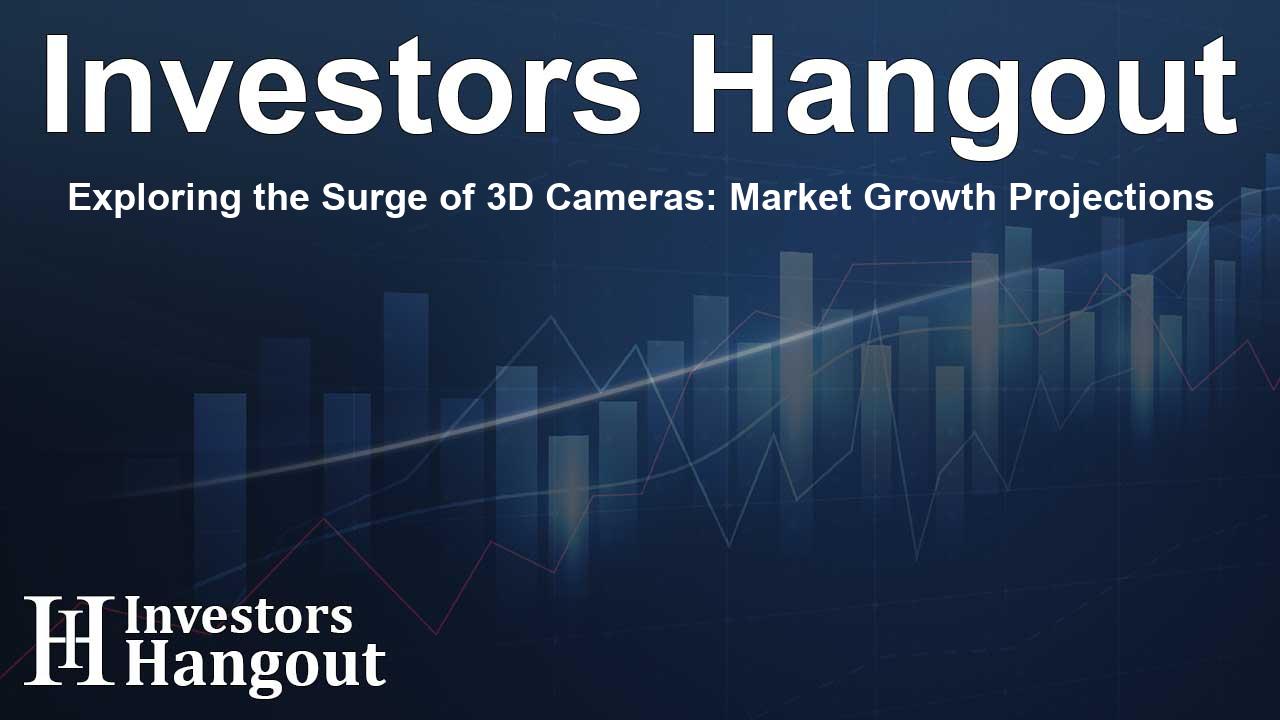Exploring the Surge of 3D Cameras: Market Growth Projections

The Expanding Landscape of the 3D Camera Market
The global 3D camera market is entering an exciting phase, projected to soar from $3.6 billion in 2023 to an impressive $9.1 billion by 2028. This growth, at a remarkable compound annual growth rate (CAGR) of 20.3%, emphasizes the increasing significance of advanced imaging technologies in diverse industries.
Key Drivers of Market Growth
As consumer expectations evolve, the camera industry is witnessing rapid transformations. The surge in the popularity of mirrorless cameras, combined with innovations such as artificial intelligence (AI) and enhanced video capture capabilities, is reshaping the market landscape. Advanced camera systems have found applications beyond traditional photography, including professional environments, security systems, and various consumer needs. This diversification indicates a promising future fueled by technology-driven advancements and expanding industry applications, especially in fields like automotive, healthcare, and surveillance.
Technological Innovations Fueling Demand
New technologies are paving the way for enhanced functionalities and features in 3D cameras. Intelligent imaging solutions with high-resolution capabilities provide new avenues in sectors like robotics and entertainment. The demand for immersive experiences is driving brands to invest in sophisticated camera designs that can meet consumer and industry specifications.
Leading Players in the 3D Camera Sector
The 3D camera landscape is competitive, featuring pioneering companies that are significantly impacting the market. Noteworthy players include FARO Technologies in the US, Ricoh Co., Ltd. from Japan, and Leica Geosystems AG from Switzerland, alongside Panasonic Holdings Corporation and Intel Corp. These companies are integrating cutting-edge technologies into their offerings and catering to a wide range of applications.
Understanding Camera Types in the 3D Market
The 3D camera market is characterized by various camera types, two of which stand out: target cameras and target-free cameras. Both types highlight different technological approaches tailored to meet specific user needs.
Target Cameras
Target cameras, which include structured light and stereo vision cameras, rely on a physical target or a projected pattern for depth information. They excel in environments requiring high precision and detailed 3D models, making them ideal for construction, logistics, and medical imaging sectors. Their ability to provide highly accurate data makes them a top choice for professionals seeking reliable measurements.
Target-free Cameras
On the other hand, target-free cameras, such as time-of-flight (ToF) cameras, operate without needing physical targets. These cameras gauge the distance by measuring how long it takes light to travel to an object and return, making them invaluable for applications in robotics and industrial automation. Their versatility enhances their appeal across various sectors.
Regional Insights into 3D Camera Adoption
The Asia Pacific region is emerging as a key player in the 3D camera market. With rapid technological advancements, this region is experiencing substantial increases in 3D camera applications, particularly in augmented reality (AR), virtual reality (VR), and industrial automation. The growing demand for sophisticated imaging solutions drives this upward trend, as industries seek more detailed spatial data for their operations.
Market Future: Trends and Predictions
In the coming years, we expect the growth of the 3D camera market to accelerate further as more industries recognize the value of advanced imaging technology. Businesses are increasingly incorporating these cameras into their operations, enhancing productivity, and efficiency through accurate data collection and processing capabilities. For services like logistics, these technologies are becoming indispensable tools that facilitate smart inventory management and operational improvements.
Frequently Asked Questions
1. What is the expected growth rate of the 3D camera market?
The 3D camera market is projected to grow from $3.6 billion in 2023 to $9.1 billion by 2028, at a CAGR of 20.3%.
2. What are the primary applications of 3D cameras?
3D cameras find applications in various sectors, including logistics, healthcare, automotive, and entertainment, among others.
3. Who are the leading companies in the 3D camera market?
Key players include FARO Technologies, Ricoh Co., Ltd., Leica Geosystems, Panasonic, and Intel.
4. What are the different types of 3D cameras?
The two main types of 3D cameras are target cameras, which require a physical target, and target-free cameras, which measure depth without any physical markers.
5. Which region is leading in 3D camera usage?
The Asia Pacific region is experiencing the highest growth in 3D camera applications due to technological advancements and increasing demand across industries.
About Investors Hangout
Investors Hangout is a leading online stock forum for financial discussion and learning, offering a wide range of free tools and resources. It draws in traders of all levels, who exchange market knowledge, investigate trading tactics, and keep an eye on industry developments in real time. Featuring financial articles, stock message boards, quotes, charts, company profiles, and live news updates. Through cooperative learning and a wealth of informational resources, it helps users from novices creating their first portfolios to experts honing their techniques. Join Investors Hangout today: https://investorshangout.com/
Disclaimer: The content of this article is solely for general informational purposes only; it does not represent legal, financial, or investment advice. Investors Hangout does not offer financial advice; the author is not a licensed financial advisor. Consult a qualified advisor before making any financial or investment decisions based on this article. The author's interpretation of publicly available data shapes the opinions presented here; as a result, they should not be taken as advice to purchase, sell, or hold any securities mentioned or any other investments. The author does not guarantee the accuracy, completeness, or timeliness of any material, providing it "as is." Information and market conditions may change; past performance is not indicative of future outcomes. If any of the material offered here is inaccurate, please contact us for corrections.